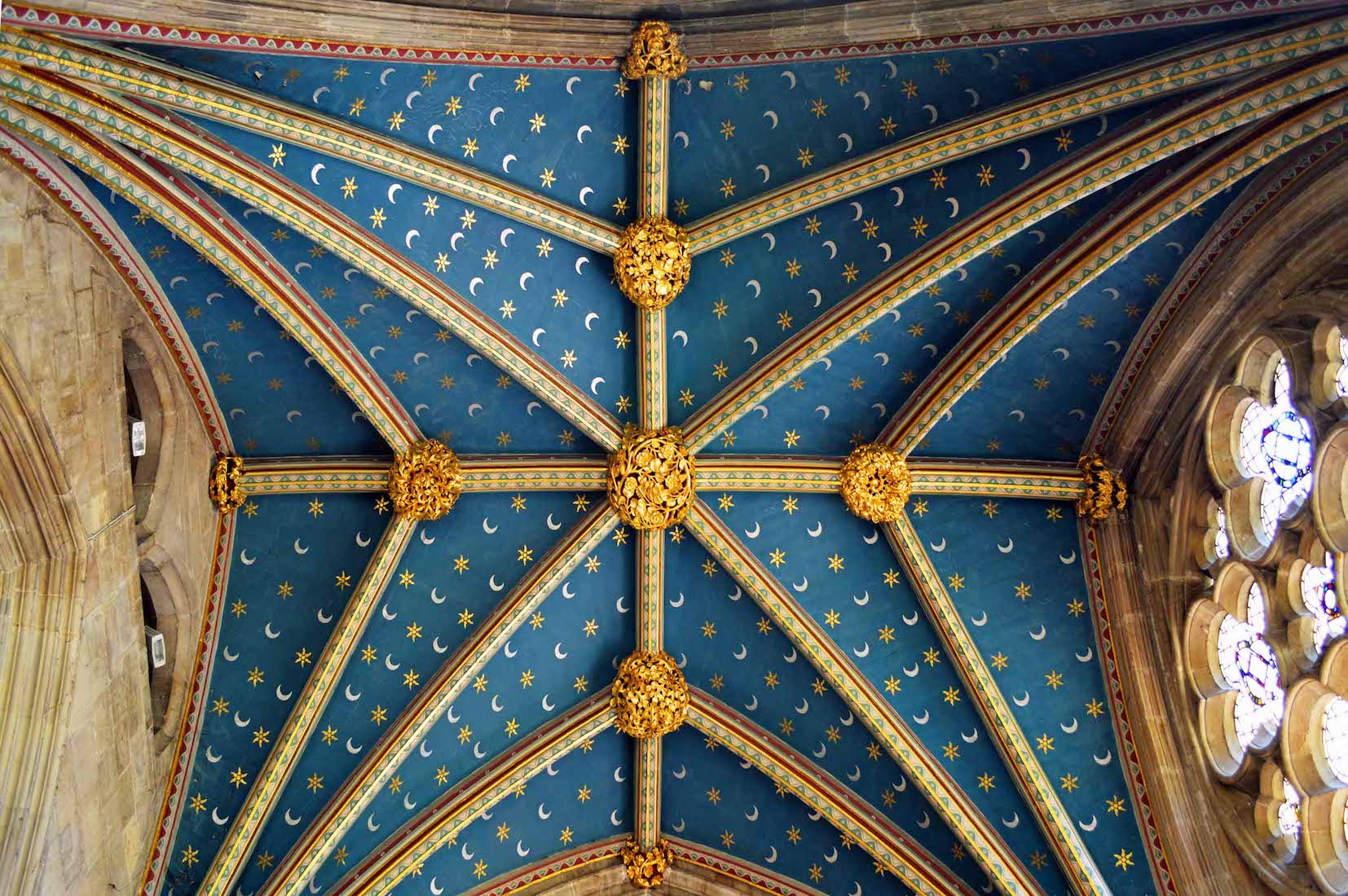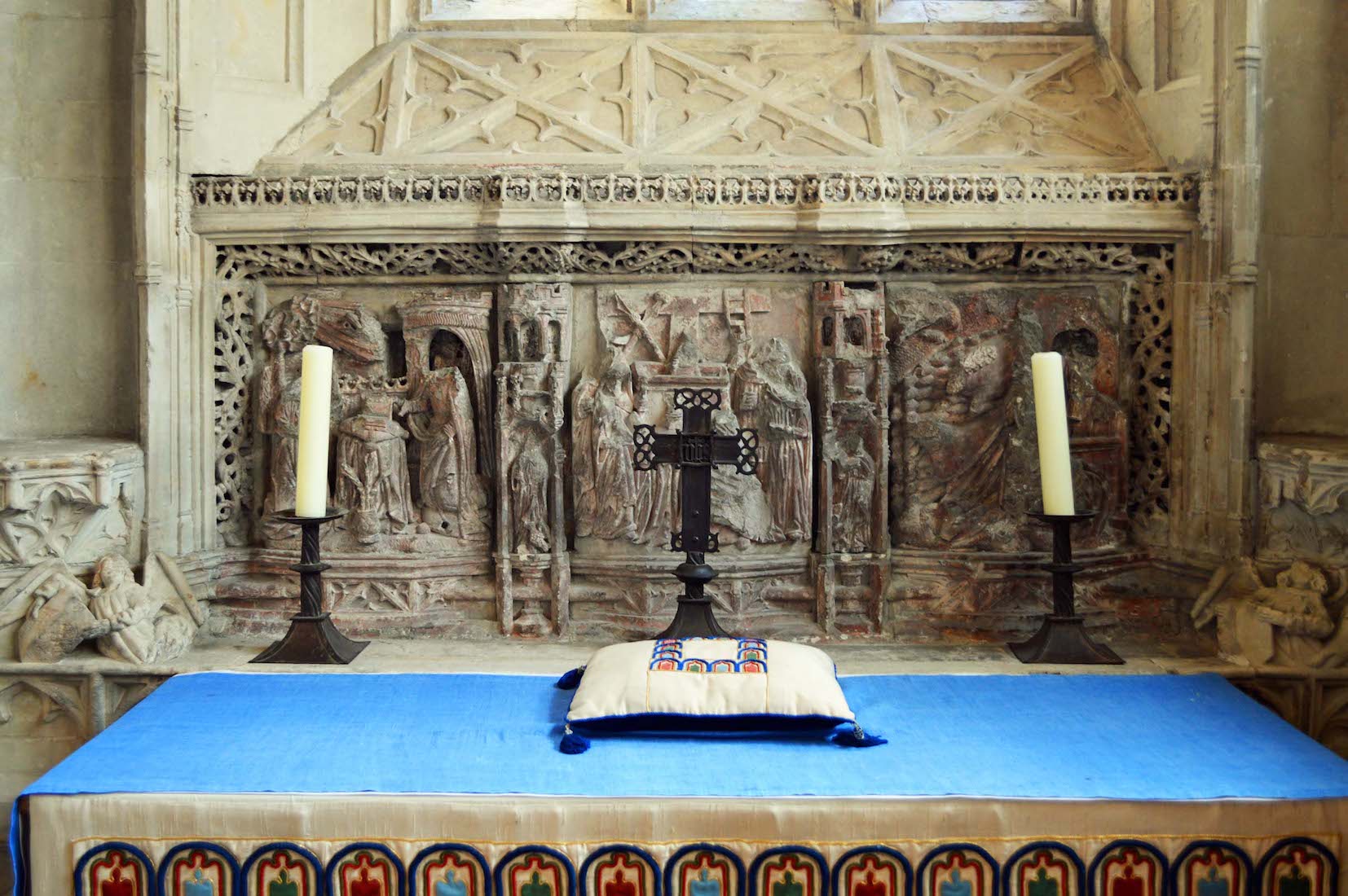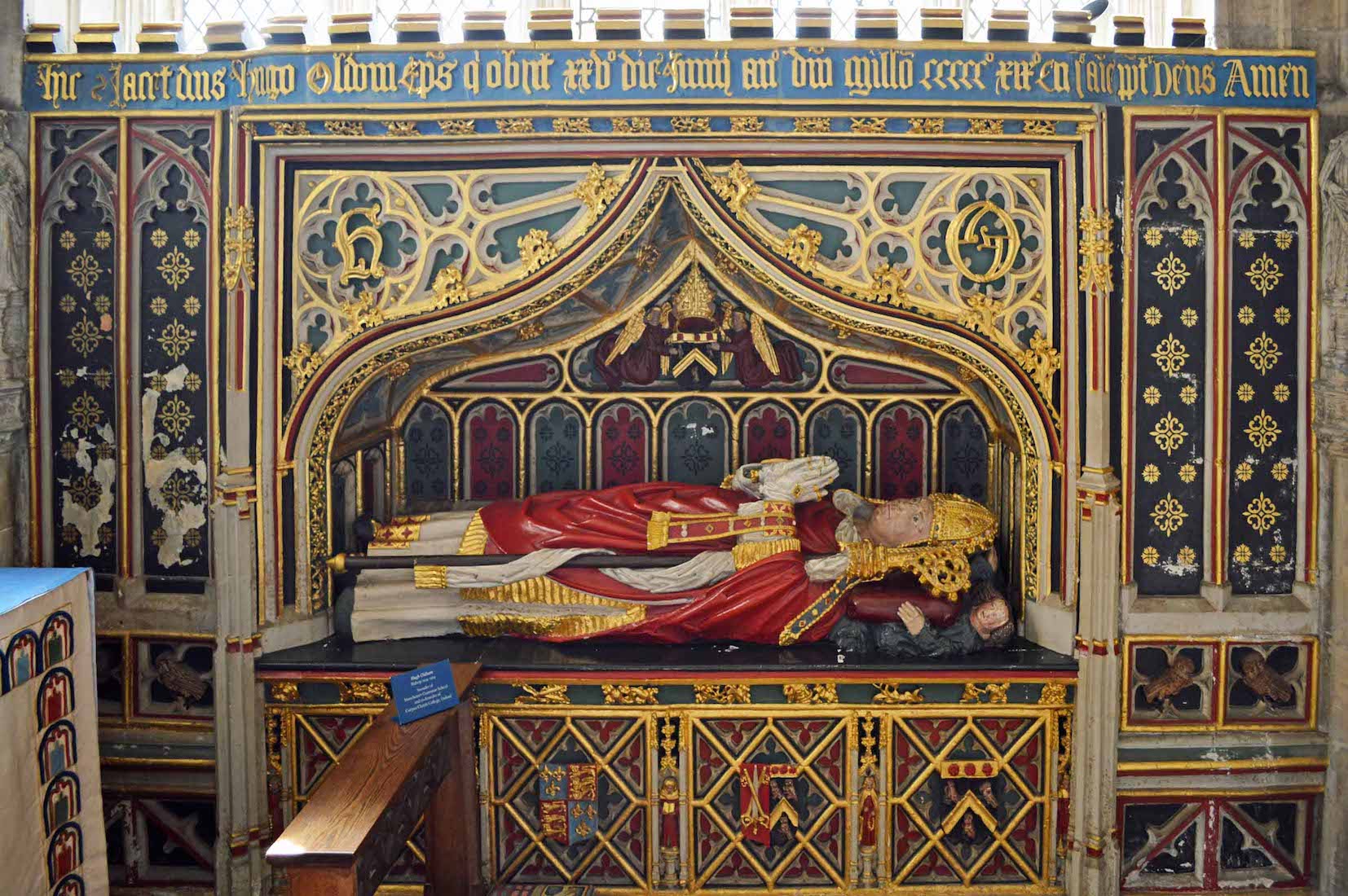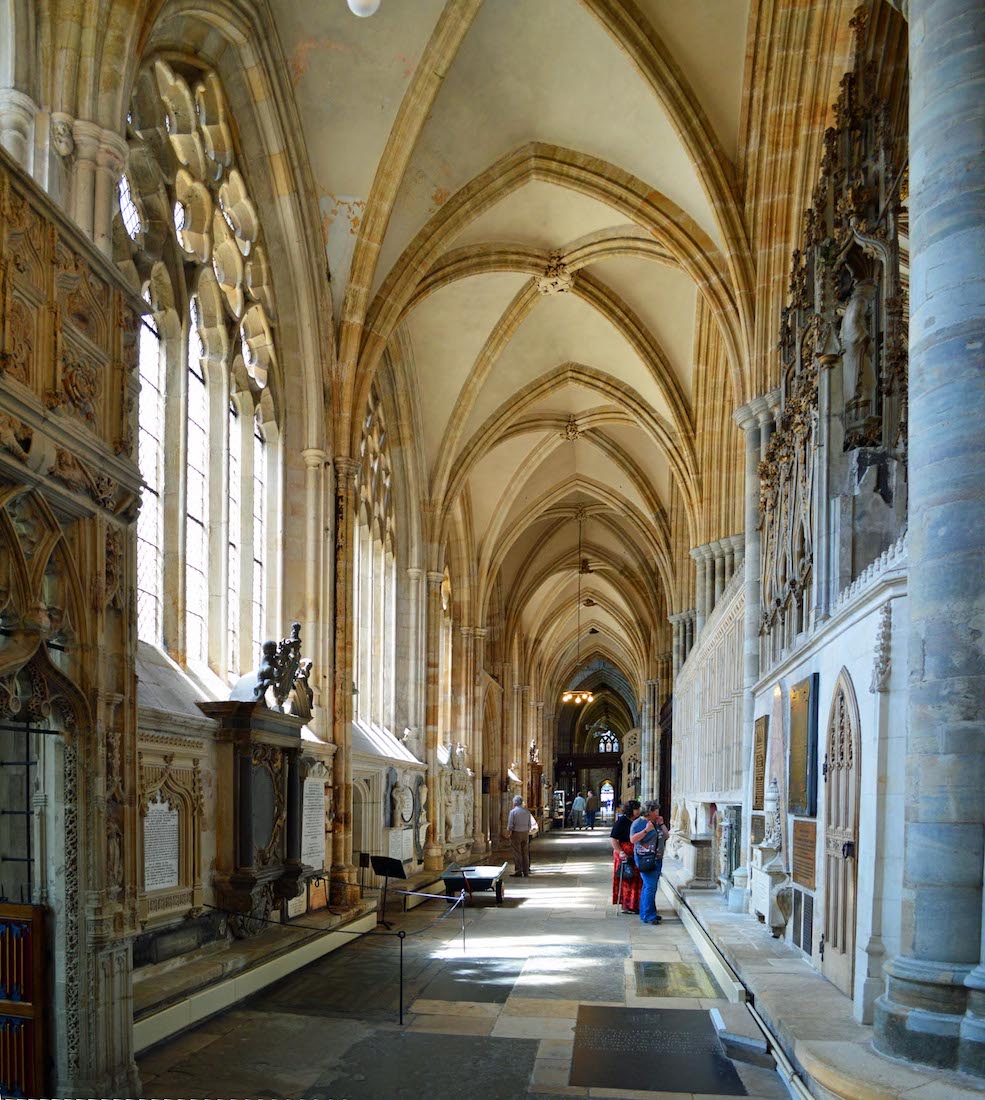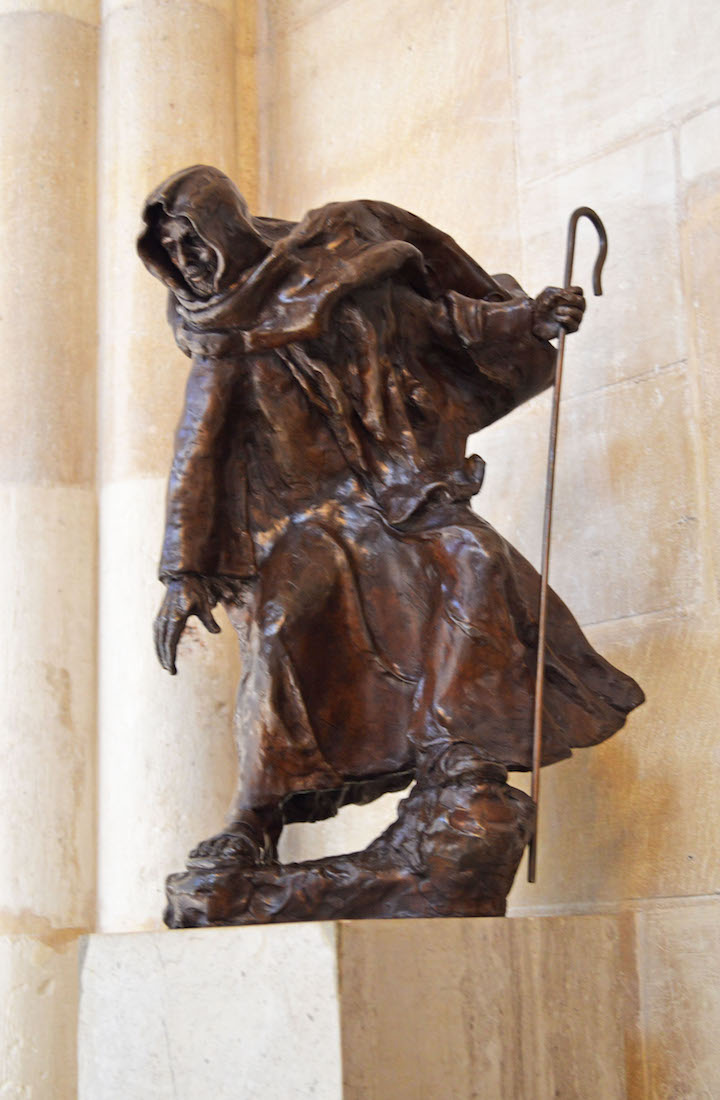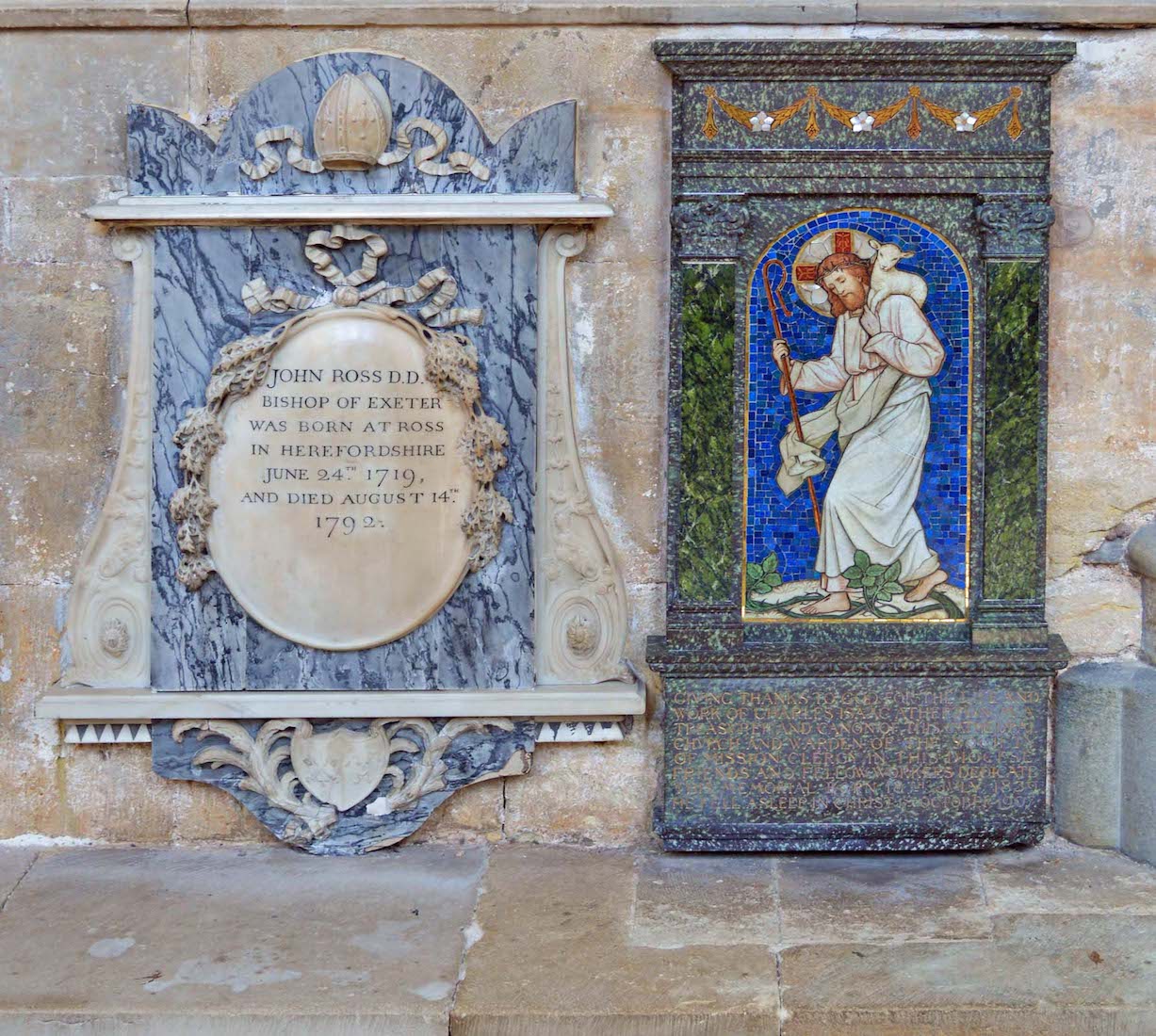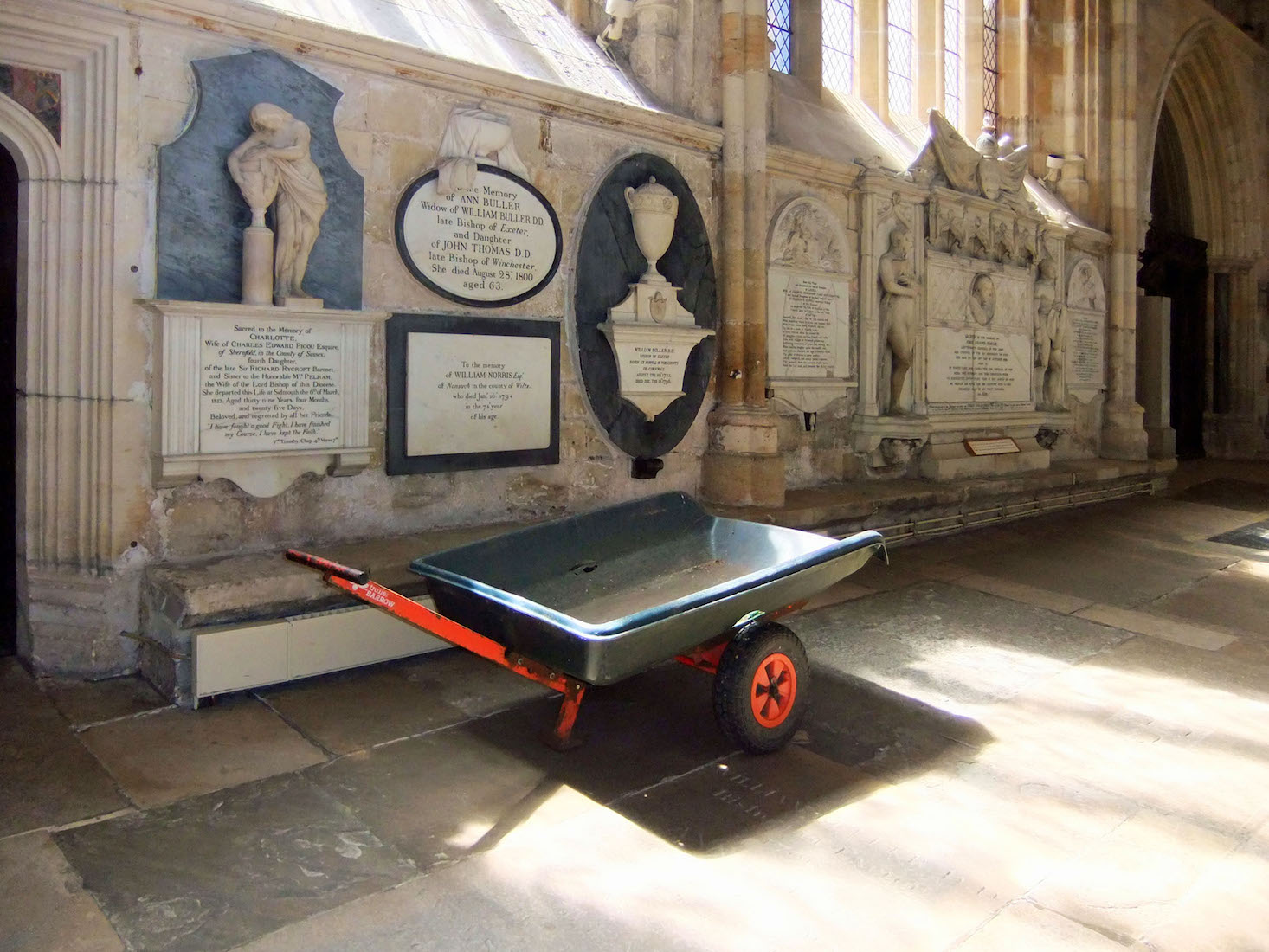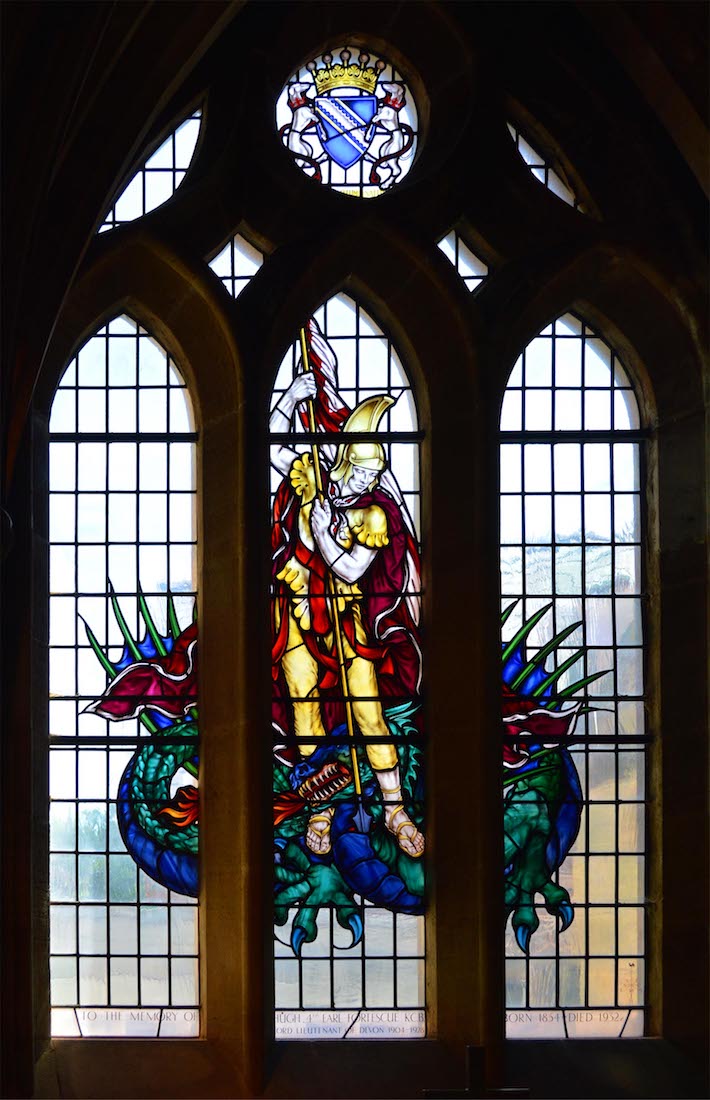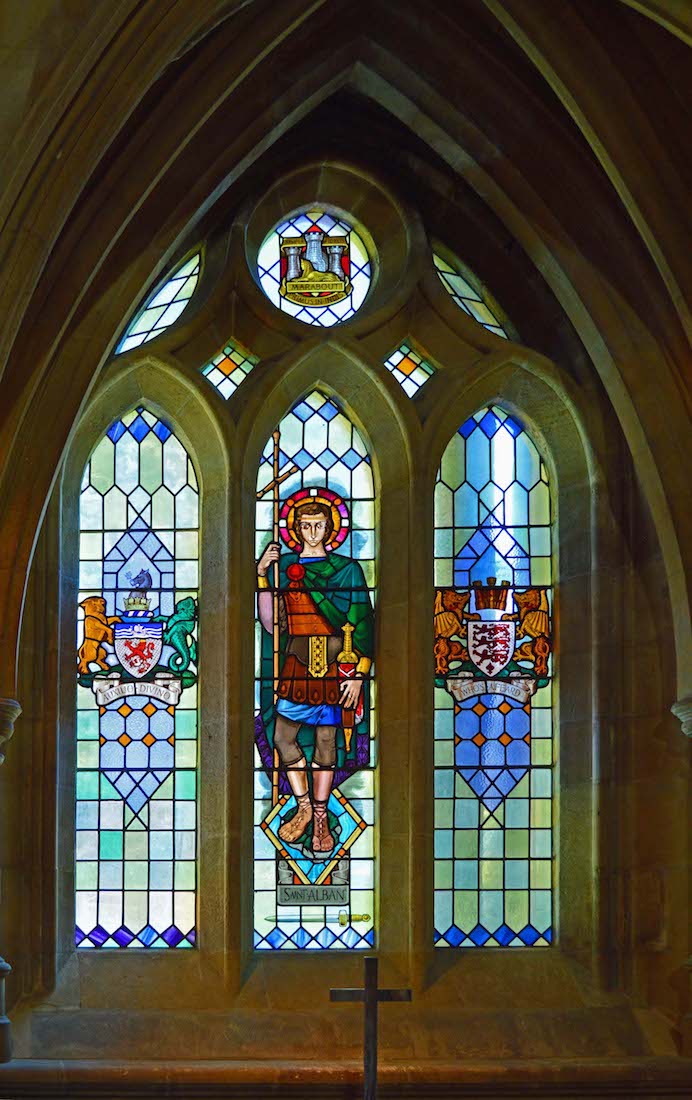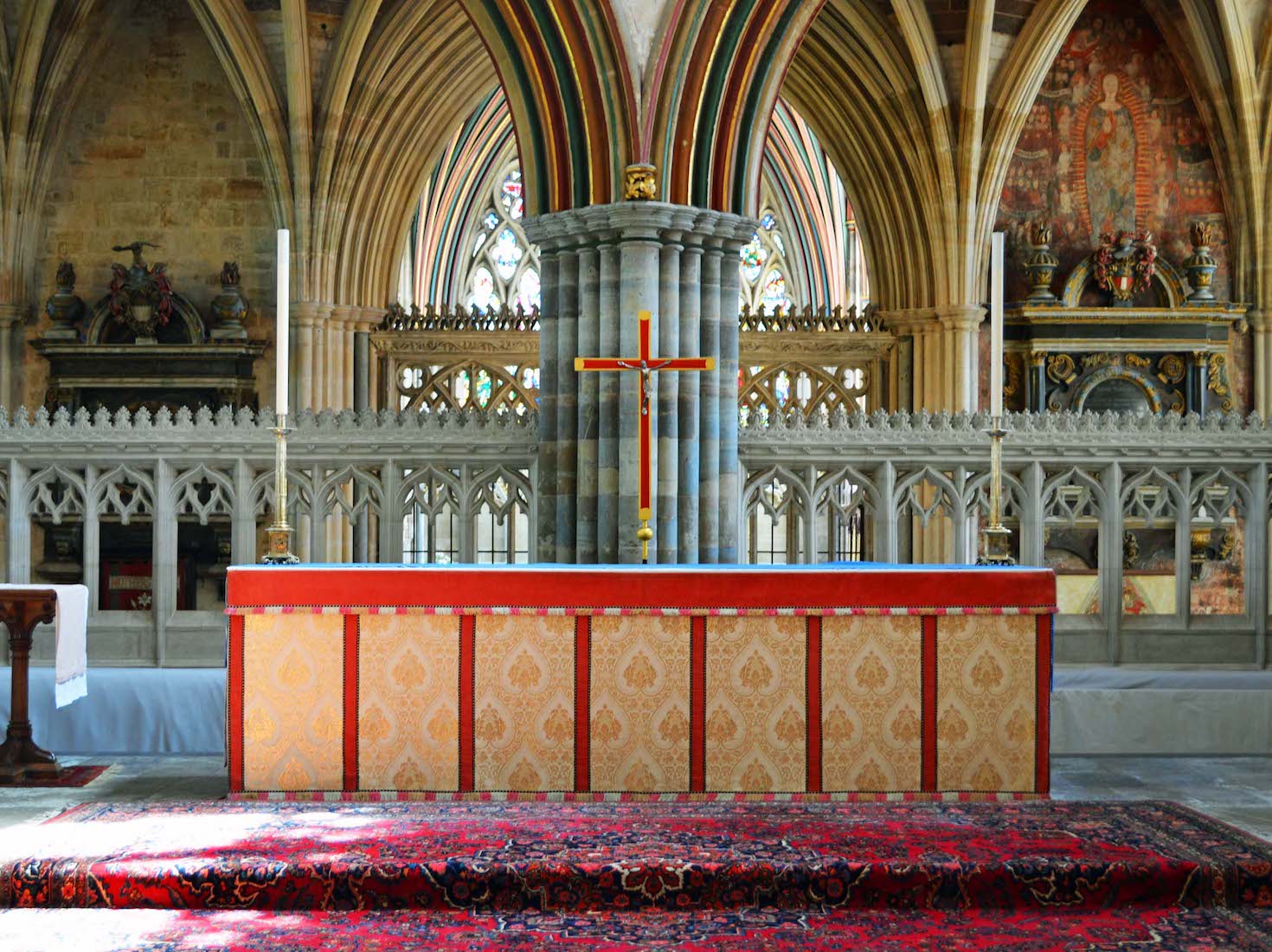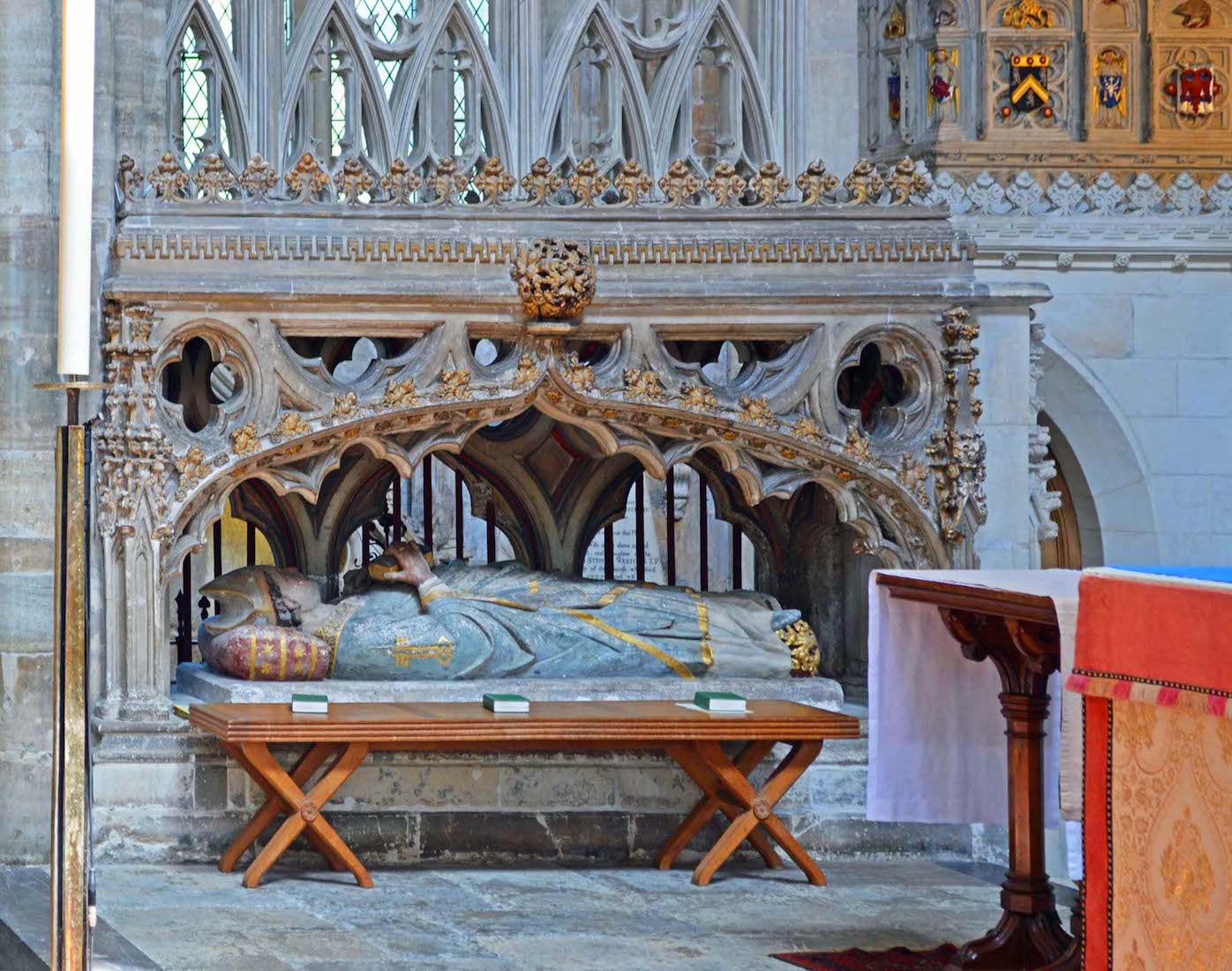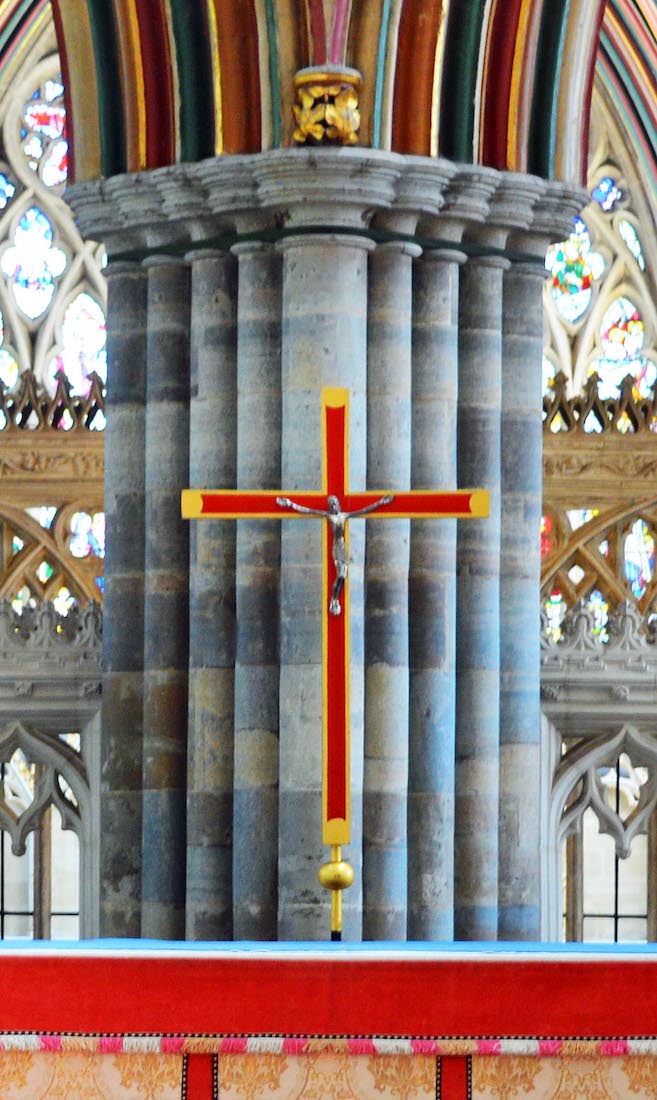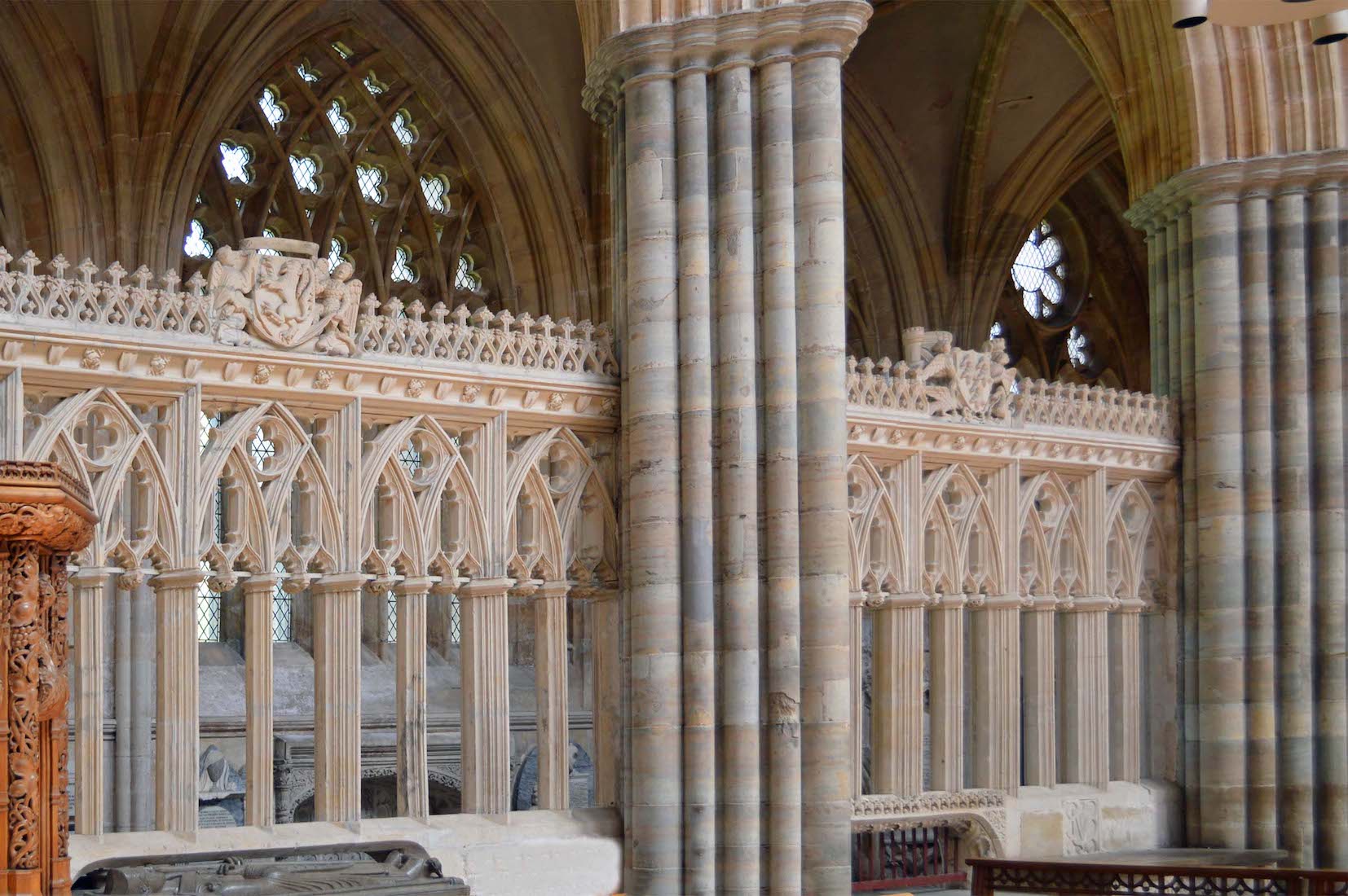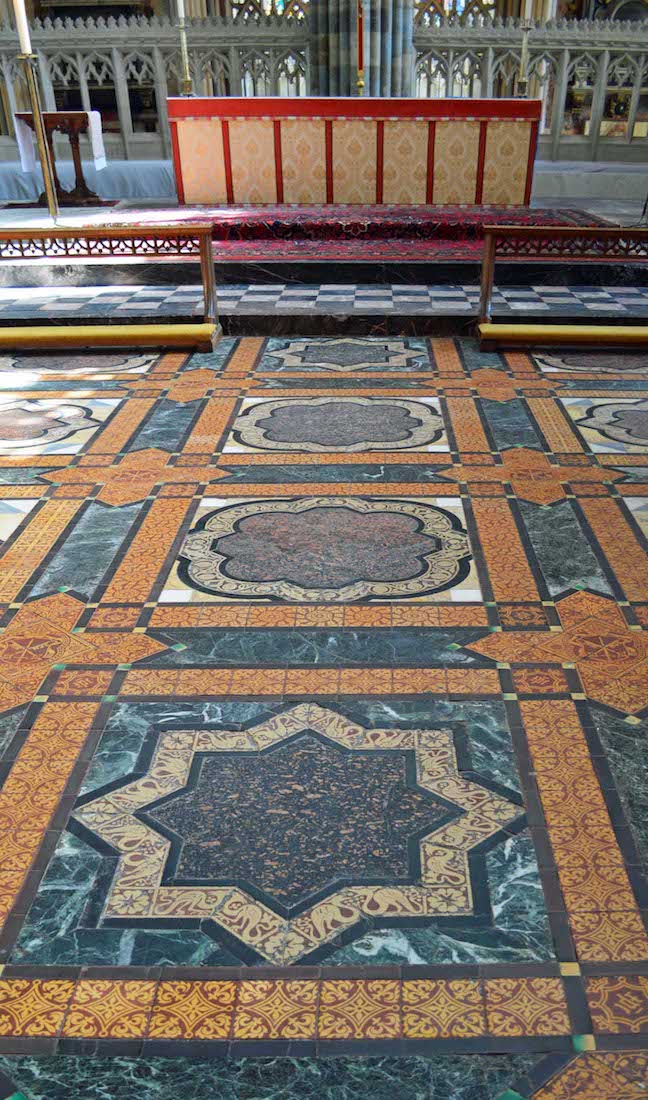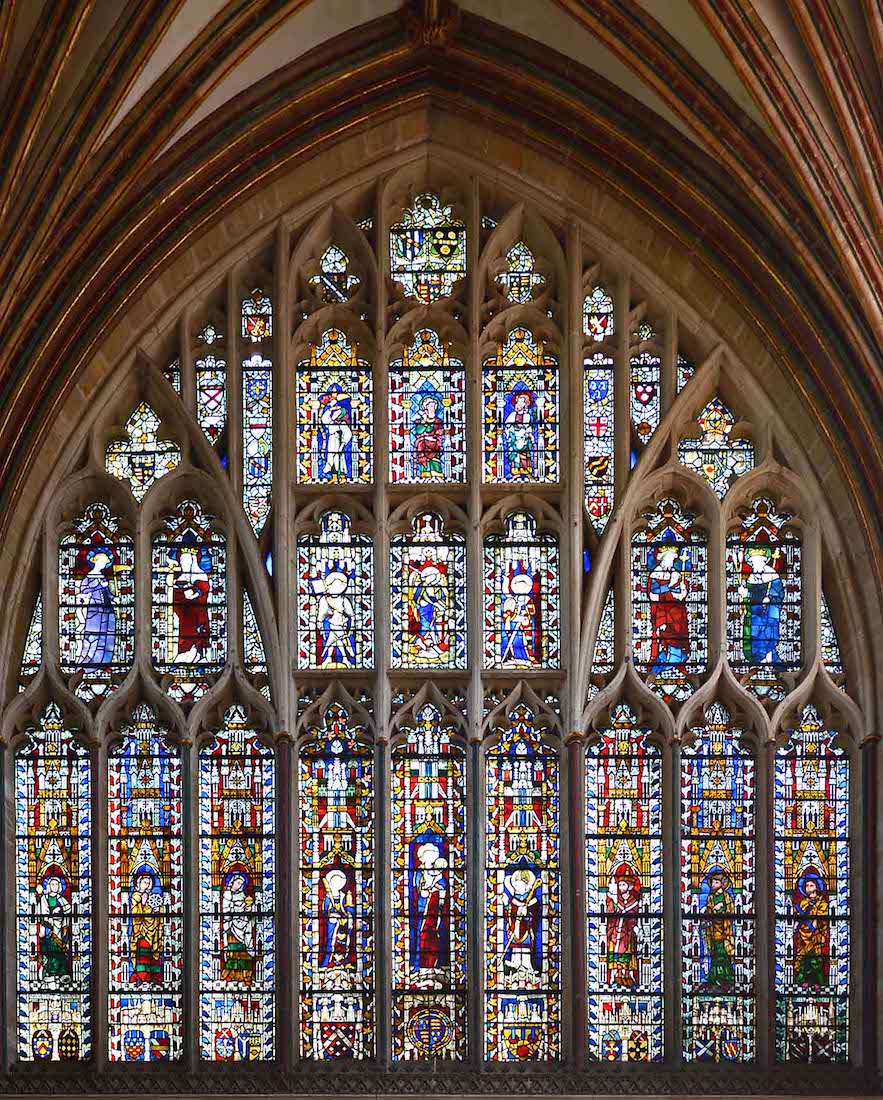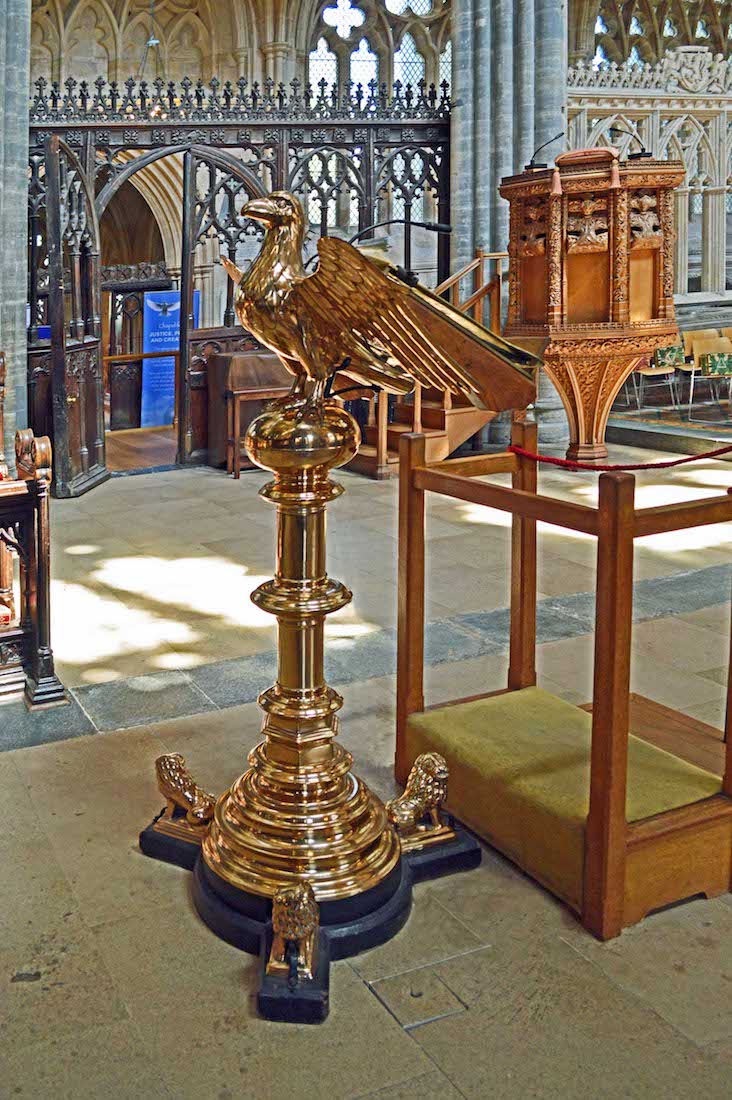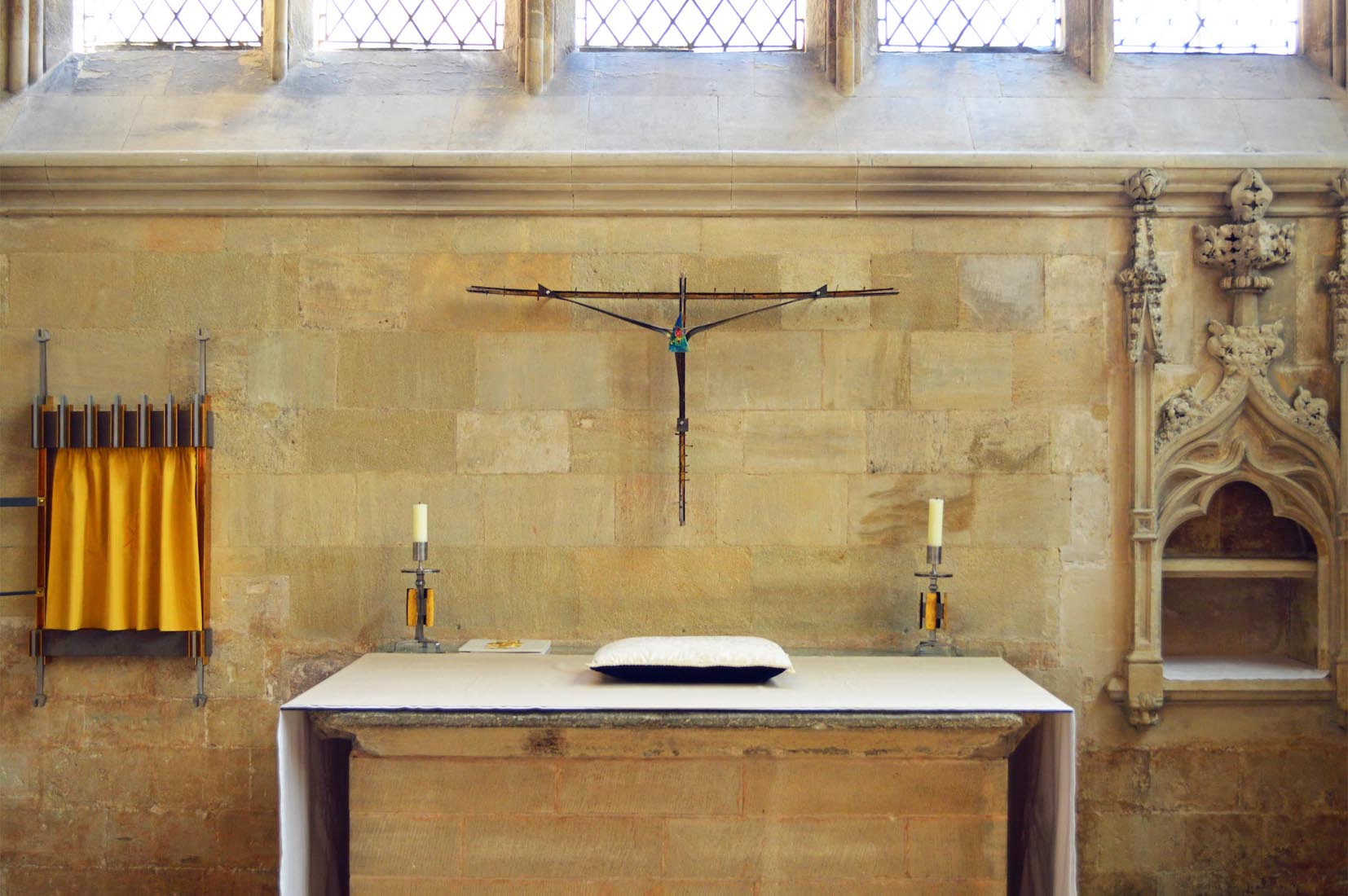
Branscombe’s tomb lies alongside the Chapel of St Gabriel the Archangel which has a simple altar and a narrow stylized cross. PLAN
82. GABRIEL CHAPEL WINDOW
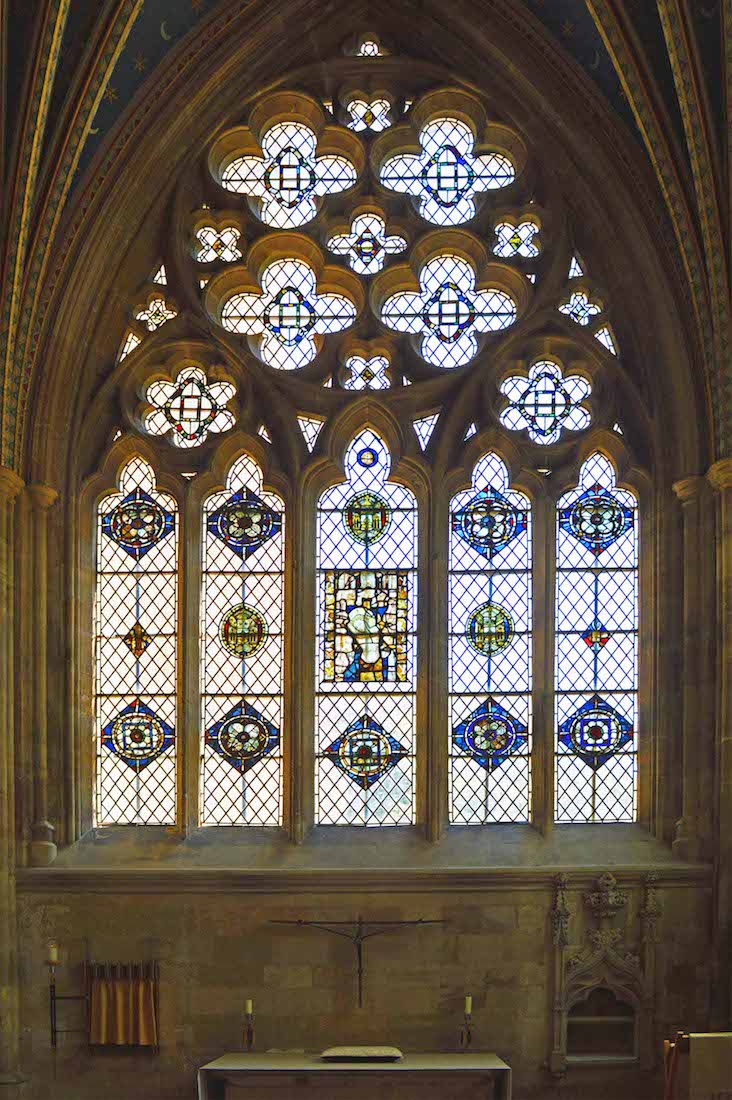
The Chapel of St Gabriel has a window with stained glass panels. There is an interesting repeated floral theme, but I am unsure of the connection here.
83. GABRIEL CHAPEL CEILING
The chapel also has a decorated ceiling with stars and crescent moons, and five very large golden bosses. The bosses have a distinctly botanical theme.
84. ST SAVIOUR’S CHAPEL ALTAR
Sir John Speke, a wealthy Devon knight, and Bishop Oldham jointly planned the construction of two new chantry chapels in complementary positions off the North and South Quire aisles of Exeter Cathedral. Oldham's chapel, off the South aisle, was apparently complete by 1513. It was dedicated to St Saviour, and Oldham intended his body to rest there. Speke died on 28 April 1518 and was interred in his tomb off the north aisle. On 16 December of the same year, Oldham drew up his will in which he gave £80 for the vicar’s choral to celebrate a daily mass for his soul at his tomb.
85. OLDHAM EFFIGY
Bishop Oldham died on 25 June 1519, just six months after completing his will. His body lies in his chantry chapel which is decorated with numerous carvings of the owl that was his personal device. One of the owls carries a scroll in its beak, bearing the letters ‘DOM’. His tomb is surmounted by a brightly painted, but rather crudely carved effigy, typical of the general decline in the quality of sepulchral monuments of the early 16th century. The tomb was restored by Corpus Christi College in the late 19th century, and it was restored again and recoloured, together with many other monuments in the Cathedral, between 1956 and 1967.
86. CHAPEL FLOOR TILING
In many old cathedrals the tiled and mosaic floors are a special feature. The floor of St Saviour’s Chapel is worthy of notice. The Chapel of St Saviour is sometimes known as the Chapel of St Saviour and St Boniface. St Boniface, the patron saint of Germany, was educated at the minster which preceded Exeter Cathedral in AD 680.
87. SOUTH QUIRE AISLE
We have now reached the Eastern end of the South quire aisle, looking right down to the door and window in the west wall. The windows are mainly clear latticed glass, and the walls are adorned with various plaques and memorials. Near the centre is a wheelbarrow!
88. AISLE SHEPHERD
Nearby is a sculpture of the Good Shepherd, very likely illustrating Luke 15:1–7 – the parable of the lost sheep.
89. AISLE PLAQUES
Two of the many plaques along this aisle. At right is the Good Shepherd, carrying the lost sheep that was found. At left is a plaque commemorating the life of Bishop John Ross. John Ross (or Rosse) lived from 1719 to 1792. In March 1769 he received the twelfth canonry in Durham Cathedral. He was consecrated on 25 January 1778 as Bishop of Exeter, and held with the bishopric, as was the case with many successive occupants of the see, the archdeaconry of Exeter, a prebendal stall in the cathedral, and the rectory of Shobrooke in Devon.
90. WHEELBARROW!
It is perhaps a surprise to find amongst the many plaques and memorial tablets a red and black wheelbarrow! However, a cathedral is a structure requiring constant maintenance. With small ground movements, stone is dislodged, marble cracks, sculptures require straightening, and all this requires heavy manual labour. Some visitors object to paying an entrance fee, or making a donation, but those who are part of a cathedral congregation know full well the enormous costs associated with maintaining these old buildings.
91. ST JAMES’ CHAPEL WINDOW
The Chapel of St James has bright, modern windows. In the early hours of the morning of the 4th May 1942, a severe bombing attack destroyed large areas of the historic heart of Exeter. The Cathedral received a direct hit on St James’s Chapel which was reduced to rubble. After the end of World War II, the chapel was rebuilt. Its design is a reconstruction of the ancient chapel but with some 20th century details.
92. ST JAMES’ CHAPEL WINDOW 2
St James’ chapel is now a Devonshire and Dorset Regimental Chapel. Here are the regiment’s most recent Colours and books of remembrance. In 2007 the Devonshire and Dorset Light Infantry Regiment’s last Colours were laid up in St James’s Chapel when the regiment was amalgamated with four others as The Rifles Regiment.
93. HIGH ALTAR
Leaving St James’ Chapel, we cross the aisle and enter the quire. At the East end stands the High Altar. This is attractive in its simplicity. The view is interesting in that it shows the Lady Chapel in the background, and the ambulatory just behind the near screen. The Mothers’ Union banner and the Resurrection banner appear at left and right through the gaps in this screen.
94. STAPLEDON EFFIGY
The tomb of Bishop Walter Stapledon (1308-1326) is to the left of the high altar. It is believed that Bishop Stapledon was responsible for the construction of an impressive reredos which stood behind the high altar, but which has since been lost.
95. HIGH ALTAR CRUCIFIX
On the altar itself is a crucifix, designed with matching simplicity to the altar.
96. QUIRE SCREEN
There is a large open area in front of the high altar. To the North side is a simple Gothic screen with a coat of arms between each pair of columns.
97. QUIRE FLOOR TILING
The floor before the altar is paved with tiles, which though intricately patterned, form a large filled lattice design befitting the scale of this place.
98. EAST WINDOW
Up above the high altar, and not to be confused with the window in the Lady Chapel, is the Great East Window. This window is one of the treasures of the Cathedral. Exeter Cathedral is not rich in pre-Reformation glass and few complete or nearly complete medieval windows survive anywhere in Devon. This is one of two exceptions, and the Great East Window at Exeter Cathedral contains the largest assemblage of medieval glass still surviving in any church in the county. The history of this window, which began in 1304, is unfortunately too complex to be related here.
99. ICON
As we make our way back towards the nave, we come to two items on the South side. The first is an icon of Our Lord, holding an open book (Bible?) with the words ‘I am the way, the truth and the life’ – words from John 14:6.
100. QUIRE LECTERN
Nearby is a traditional lectern with lions at the base, and in the form of an eagle with outspread wings. There is a tradition that of all the birds the eagle flies highest to heaven.


